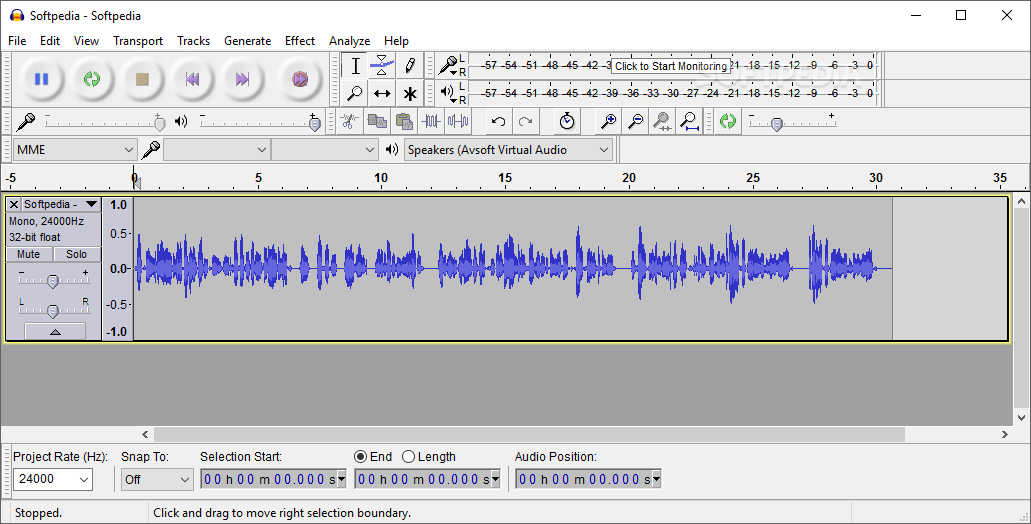
Audacity recognizes all kinds of inputs, including USB audio, standard mic-in, and the beefier line-in. Recording audio from outside sources-such as a microphone, a guitar, a record player or a USB turntable-is fairly easy with Audacity, though fine-tuning the input sound may take some work.īegin by plugging your input device into your computer (unless you’re recording with a computer’s internal microphone, of course).

People frequently use Audacity to record podcasts or jam sessions, or to convert music from old cassette tapes and vinyl records into digital files. Basic Editing 101īefore you start tinkering with the nuts and bolts of an audio track, you’ll have to make sure it’s stopped and not playing. Get comfortable with this, because highlighting particular sections of tracks plays a large role in editing and adding effects to audio files. Audacity Click and drag your mouse across two points on the graph to isolate it for editing.Ĭlicking and dragging the cursor between two points on the graph will cause Audacity to play only the selected section. Moving the slider to the left slows the audio down, while moving it to the right speeds the audio up to Alvin and the Chipmunks velocity. In the Audacity Transcription toolbar, the slider to the right of the secondary green Play button controls playback speed. Clicking a specific time on the graph and then pressing Play will start playback from that part of the track, instead. Pressing Play will start the track from its beginning by default. When you load a track, its waveform graph appears in the middle of the screen-and Audacity activates (left to right) the Pause, Play, Stop, Skip to End, Skip to Start, and Record buttons on the upper-left side of the window. Be sure to rip the CD to a supported file format.
#Audacity stereo tools download#
While you’re mucking around on the LAME library website anyway, take time to download and run the latest version of the actual LAME file as well (LAME_v3.99_3 at the time of publication.) It lets you export (read: create) audio in the MP3 format, which Audacity can’t do by default.Īudacity doesn’t include the ability to rip audio from CDs, either, so you’ll have to rip the CD to your computer using a third-party program-Windows Media Player includes CD ripping functionality, for example-and then edit the digital files. (You’ll have to restart Audacity afterward, if it’s open at the time.) Head to the LAME library download page, and download and run most current version of the FFMpeg Binary available for your operating system. Audacity won’t play proprietary audio formats like WMA without the aid of third-party plug-ins.įortunately, a third-party plug-in enables support for Dolby’s AC3, Microsoft’s WMA, and Apple’s AAC, M4A, and M4R files.


 0 kommentar(er)
0 kommentar(er)
